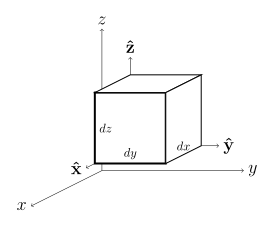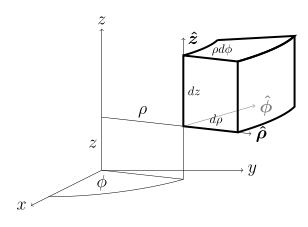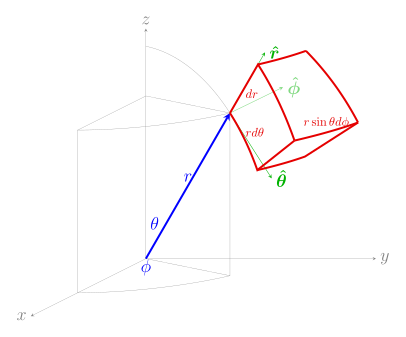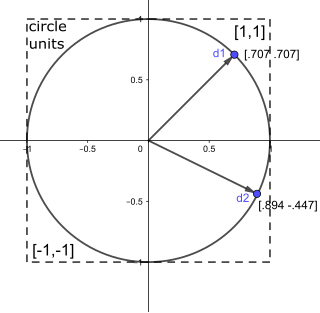| Operation | Cartesian coordinates (x, y, z) | Cylindrical coordinates (ρ, φ, z) | Spherical coordinates (r, θ, φ),
where θ is the polar angle and φ is the azimuthal angle α |
|---|
| Vector field A |  |  |  |
|---|
| Gradient ∇f [1] |  |  |  |
|---|
| Divergence ∇ ⋅ A [1] |  |  |  |
|---|
| Curl ∇ × A [1] |  |  |  |
|---|
| Laplace operator ∇2f ≡ ∆f [1] |  |  |  |
|---|
| Vector gradient ∇A β |  |  |  |
|---|
| Vector Laplacian ∇2A ≡ ∆A [2] |  | 
| 
|
|---|
| Directional derivative (A ⋅ ∇)B [3] |  |  | 
|
|---|
| Tensor divergence ∇ ⋅ T γ | 
| 
| 
|
|---|
| Differential displacement dℓ [1] |  |  |  |
|---|
| Differential normal area dS |  |  |  |
|---|
| Differential volume dV [1] |  |  |  |
|---|















































































































